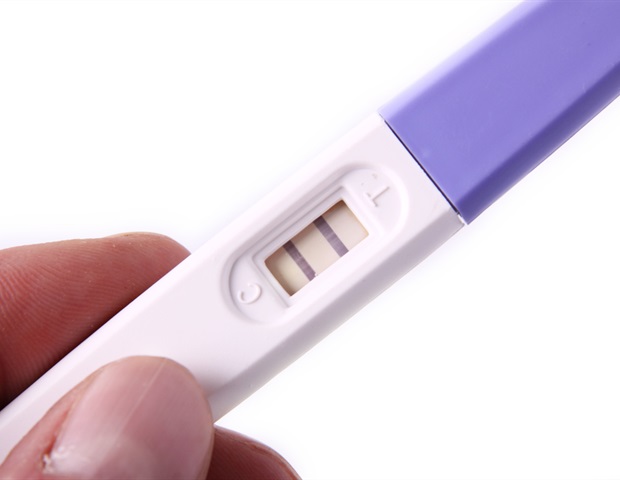In a latest research posted to the medRxiv* preprint server, researchers investigated the associations between antibody ranges towards extreme acute respiratory syndrome coronavirus-2 (SARS-CoV-2) and the risk of subsequent infection.
Background
Immune responses after SARS-CoV-2 infection or vaccination differ over time and between people. Antibodies towards SARS-CoV-2 nucleocapsid (N) protein are elicited in response to infection however not vaccination. Therefore, the presence of anti-N antibodies is a precious surrogate to differentiate infection-elicited antibodies from vaccine-induced antibodies.
Earlier research noticed a correlation between greater ranges of antibodies towards spike (S) protein or its receptor-binding area (RBD) after two vaccine doses and enhanced safety towards subsequent infection. Moreover the temporal results, the neutralizing capability of the antibodies differs primarily based on virulence and divergence of S proteins in emergent variants from the ancestral S protein.
The research and findings
Researchers evaluated the origins and penalties of variation in anti-SARS-CoV-2 antibody ranges after vaccination in the present research. They quantified antibody ranges of contributors from two longitudinal cohorts in the United Kingdom (UK): TwinsUK and Avon longitudinal research of dad and mom and youngsters (ALSPAC).
Antibodies ranges have been decided at two time factors for 9361 people from ALSPAC and TwinsUK cohorts throughout April-Could 2021 (referred to as Q2, as in the calendar 12 months quarter) and 3575 topics from the TwinsUK cohort between November 2021 and January 2022 (This autumn). Those that acquired extra vaccine doses have been older and seemingly enlisted in the UK “Shielded Affected person Record” than contributors who acquired fewer doses.
The prevalence of suspected or confirmed coronavirus illness 2019 (COVID-19) circumstances at Q2 testing was 26% amongst the TwinsUK and 20% in the ALSPAC cohort. Nonetheless, anti-N antibody positivity was decrease at 10% in ALSPAC and 12% in TwinsUK. In This autumn, SARS-CoV-2 infection prevalence was greater, with 33% suspected or confirmed circumstances and 17% primarily based on anti-N antibody ranges.
Inside the TwinsUK cohort in This autumn, the authors noticed extra vital and sustained antibody ranges post-third dose with much less variation between people in comparison to the antibody ranges of people with fewer vaccinations. For example, the median degree of anti-S antibodies was 13,700 binding antibody models (BAU)/ml after the third vaccination, which was 10-fold greater than the ranges post-second dose (1300 BAU/ml).
People with the lowest antibody ranges had substantial will increase in absolute ranges following the third dose. TwinsUK topics sampled two/three weeks after the third vaccination had the highest median antibody ranges for up to 16 weeks. The median ranges declined between two and eight weeks, and there was no additional decline after that. Longer time since vaccination was related to decrease ranges of antibodies for people sampled between 13 and 33 weeks post-second dose.
At Q2, antibody ranges peaked 9 weeks post-first dose amongst TwinsUK and ALSPAC topics. After the second dose, antibody ranges surpassed the assay restrict from the second week onwards. In the TwinsUK cohort, vaccine breakthrough infections have been recorded in 276 (9.2%) people between the first vaccination and This autumn. Those that have been single-vaccinated at Q2 with a subsequent breakthrough infection had decrease Q2 median antibody ranges (40 BAU/ml) than those that didn’t expertise breakthrough infection (57 BAU/ml).
They famous that people with the lowest antibody ranges at Q2 have been at greater odds of experiencing a breakthrough infection in univariable (odds ratio, OR: 3.2) and multivariable (OR: 2.9) logistic regression fashions. Elevated odds of having the lowest antibody ranges after the first vaccination was noticed in these on the UK Shielded Affected person Record in TwinsUK (OR: 4) and ALSPAC cohorts (OR: 4.1).
People vaccinated with AstraZeneca’s AZD1222 vaccine had larger odds of having decrease antibody ranges after the first and second vaccination relative to Pfizer’s BNT162b2 vaccinees. Nonetheless, a double AZD1222 dose was not related to decrease ranges of antibodies after the third vaccination. In the TwinsUK cohort, monozygotic (MZ) twins exhibited minor common intra-pair variations in anti-S antibody ranges post-third dose relative to dizygotic twins. The intra-pair variations have been giant for non-related topics.
Conclusions
The researchers discovered excessive variability in antibody responses after the first vaccination with reducing variability after administration of second and third vaccine doses. People who had low ranges of antibodies post-first dose have been at an elevated risk of subsequent breakthrough infection even after additional rounds of vaccination.
Moreover, elevated odds of having decrease ranges of antibodies post-vaccination have been noticed for 1) people on the Shielded Affected person Record, 2) first and second-dose recipients of the AZD1222 vaccine, 3) those that reported poorer well being, and 4) those that have been prescribed immunosuppressants. Nonetheless, there have been no variations after the third vaccination between people who acquired BNT162b2 or AZD1222 for his or her first and second vaccination, underpinning the booster impact of the third dose.
These findings advised that measuring anti-S antibodies induced after the first vaccine dose would possibly function an early indicator for figuring out these at elevated risk of COVID-19 infection in the future.
*Necessary discover
medRxiv publishes preliminary scientific stories that aren’t peer-reviewed and, subsequently, shouldn’t be thought to be conclusive, information medical follow/health-related habits, or handled as established info.







